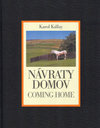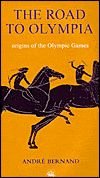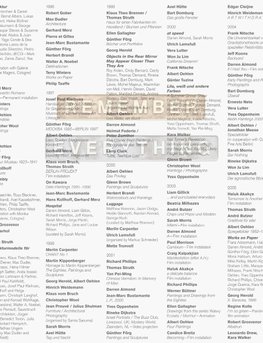
-
 Anglický jazyk
Anglický jazyk
Remember Everything<BR>40 Years Galerie Max Hetzler
Autor: Jean-Marie Gallais
Aus Anlass des 40-jährigen Bestehens der Galerie Max Hetzler vereint die Gruppenausstellung "Remember Everything" aktuelle Arbeiten von 21 Künstlern, die durch die Galerie derzeit vertreten werden. Die Dokumentation dieser Ausstellung ist aber nur der Grundstein... Viac o knihe
1 kus - skladom u vydavateľa Posielame do 7-10 dní
41.67 €
bežná cena: 46.30 €
O knihe
Aus Anlass des 40-jährigen Bestehens der Galerie Max Hetzler vereint die Gruppenausstellung "Remember Everything" aktuelle Arbeiten von 21 Künstlern, die durch die Galerie derzeit vertreten werden. Die Dokumentation dieser Ausstellung ist aber nur der Grundstein für dieses Buch, erweitert durch Interviews mit den Künstlern, die an ihre Zeit mit der Galerie und ihre dort ausgestellten Arbeiten zurückdenken. Der einleitende Essay und eine ausführlich bebilderte Chronologie erzählen die ganze Geschichte der Galerie Max Hetzler von den Anfängen in Stuttgart über Köln nach Berlin, die durch das beeindruckende Aufgebot der vielen international bedeutenden Galeriekünstler zu einem Teil der Geschichte der zeitgenössischen Kunst geworden ist. UNDERGROUND GEOGRAPHY (Auszug aus der Einleitung von Jean-Marie Gallais) The group exhibition entitled "Remember Everything" (after a work by Darren Almond) opened in the vast space at Osramhöfe, Berlin-Wedding-the last event organized there by Max Hetzler and Samia Saouma's gallery. That show brought together recent works, some created expressly for the occasion, by all the artists represented by the gallery at this time. "Remember Everything": the words probably resonated throughout the weekend in the minds of Max and each of the artists, who are more than partners in the adventure. From the outside, the title of the exhibition might suggest a historical overview, but it's more in the nature of a freeze frame: this is what the Galerie Max Hetzler is, this is its substance, forty years after its opening. Only a printed wall at the further end of the space set out in chronological order the impressive program of exhibitions realized since 1974. A few months later, this book comes to close the event while extending it... If there is a single lesson to be learned from the first twenty years of Galerie Max Hetzler, the "before-Berlin-era," it is the answer Max invariably gives the journalists when they ask him, as they often do, what his guiding vision is: "The program is the artists." And this was no doubt even more relevant for the following twenty years: it was in Berlin that the current Galerie Max Hetzler took shape. Chronology becomes more vague and porous. Günther Förg, Albert Oehlen, Jeff Koons, Thomas Struth, and Christopher Wool were still shown in Berlin as they were in Cologne, and did important exhibitions here. Over the next few years, Samia and Max had determining encounters with those (native or adoptive) Londoners, Darren Almond, Glenn Brown, Michael Raedecker, Bridget Riley, Rebecca Warren, Toby Ziegler. It was while Rineke Dijkstra was in residence in Berlin that they made her acquaintance. Yves Oppenheim, meanwhile, left Paris permanently for the German capital. In an exhibition curated by Sarah Morris in 1997, Hospital, they met Darren Almond but also Richard Phillips, with whom they began to work. Glenn Brown had a first solo show in 2000; Vera Lutter in 2002. In the early years of the new millennium, Max also took an interest in the painting of German artist Frank Nitsche, and in that of André Butzer. Then he traveled with his very close friend, "the publisher" (Max so designated him in a chronicle he wrote once for a magazine), and in Brazil they came across Beatriz Milhazes, Ernesto Neto, and Marepe. In 2005, during an exhibition of drawings and works on paper, Samia invited Mona Hatoum, who subsequently had three exhibitions at the gallery. In 2007, they began to work with an artist that they had long admired, Bridget Riley, who made her first wall painting in the gallery on this occasion. Just before, Rebecca Warren had presented her work there for the first time; Toby Ziegler and Michael Raedecker followed with solo exhibitions in the past five years. All these marvelous and brilliant artists have made Remember Everything. It is these artists who are the substance of the exhibition, of this book, and of the Galerie Max Hetzler. The story of the Galerie Max Hetzler is the story of a little legend unwilling so to conceive itself. This book has not been made in order to glorify it but to give an account of what has happened. "The great thing about Max is that he always prepares you and gives you plenty of time to think about an exhibition. I'm very close to him and he's had a huge effect on my life. When he's thinking about a show he invites you to Berlin and shows you the space and you have a lot of time to prepare. I worked really hard to create something for this huge, raw space in Berlin-Wedding. Because I had this time, the exhibition felt a bit like a curated museum show and reflected what was a self-examining, questioning moment in my practice." Darren Almond "Max was very personally involved with his artists; he used to hang out with them all the time. Was Max an artist at one time? Because he was living almost the same lifestyle with them. His relationship to artists was like brotherhood. In general, there was a sense of bonding, being part of one's generation. It was very interesting to have this European reference or counterpoint, from my American point of view. I don't mean a counterpoint in the sense of opposite, but to see what happened there in a contemporary moment. I felt we were all connected with each other. We found counterparts in Europe to what our ambitions were. I think that Kippenberger and Oehlen would also have considered that myself and Gober, Wool, and different people represented the same type of energies here in New York. We were united in Max's gallery and from there we started to exhibit together internationally." Jeff Koons "I wanted to work with somebody who had the willpower to move things. Actually, I didn't know at that time how much Max likes changes! He is a risk taker and he makes quick decisions. Look at the evolution of the gallery: when I came it was the Cologne scene, Kippenberger, Mucha, Büttner, Kiecol, Oehlen, and it's completely different today. The art changed, Max changed, the gallery changed a lot. I think meeting Samia and the birth of their son Max Jr. were two decisive turning points. He's also this kind of gallerist: when you ask something, his response is not exclusively colored by his own interests. Max thinks more about what's best for his artists." Thomas Struth
- Vydavateľstvo: Holzwarth Publications
- Rok vydania: 2014
- Formát: Hardback
- Rozmer: 287 x 223 mm
- Jazyk: Anglický jazyk
- ISBN: 9783935567695
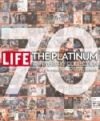
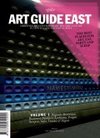

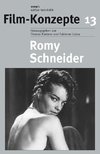

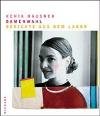
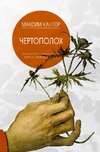
 Ruský jazyk
Ruský jazyk 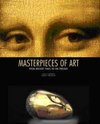
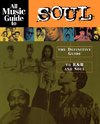

 Nemecký jazyk
Nemecký jazyk 
